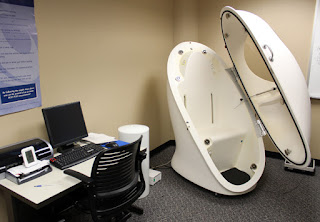By: Joel Luedke



There have been many times in my short career where a seemingly straight forward injury or training ideal has perplexed me and seemed way more complicated than it needed to be. I've often thought maybe I am over thinking this and that I should just go back to the basics of treatment or performance and that should take care of it. I mean icing and stretching has worked for years right? So why don't we just go back to that with a little bit of rest and that should fix everything. Or why did we every go away from 4-6 reps for strength/power, 8-12 for hypertrophy and 15+ for 'endurance' and toning. Alright, done, post over we fixed it all..or did we? Of course we didn't.
Again this is something I have struggled with over my career and thinking that there has to be a simpler way to get healthy, prevent injury, eat cleaner and perform better. We are always searching for the minimal effective dose to get those maximum results. The more I have progress in my career and learning from different professionals at many continuing education sources the more the body and how it responds astounds me. The body is anything but simple, it is probably the most complex thing you can get yourself involved with learning because of its constant ability to change and adapt and give the appearance that everything is simple.
What I have come to realize that we take for granted so many things and none of that was more apparent than after taking a Dynamic Neuromuscular Stabilization course. The very short description of what I learned at the course is we lose our very innate and natural ability to produce movement as we grow up. The situations we put ourselves in on a daily basis turn muscles that we need to use off and helps throw our posture completely out of alignment. In theory you would hope it would be simple to convince yourself to straighten up and pull your shoulders back all the time but it never appears to be so. If you don't believe me have myself or Dr. Kyle or Dr. Erica at Coulee Health run you through abdominal bracing and then the breathing properly and you will soon discover it is not that easy.
Performance is another area that makes for what seems to be easy become extremely complicated. We won't even get into programming and designing what weights, percentages and volume to use but just looking at squat form. I'm not sure one exercise has ever been scrutinized as much as this movement. Knees out vs. knees really out. Should your knees go past your toes? Where should the bar be? Do you want your torso up right? If your back has any angle to it your going to hurt yourself correct? What about the make up of my legs with having really long femurs? Dizzying enough for you yet? There are many things that highly trained coaches, athletic trainers and therapists can spot that you may never notice but that doesn't have to keep you away from the movement. Start with the basics and figure out how your own body moves through motions like the squat and then start addressing your own tweaks as needed. Not everyone can squat the same and the list of reasons for that is long and distinguished. Your body moves how you need it to move and if you can optimize that you are on the right track.

The government did what they could in the past (and present) to try and make this as simple as possible and we got the Food Pyramid and My Plate. What has not so quickly been found out that it isn't just that easy to throw out recommendations and have them work for everyone and that the recommendations may not be as spot on as they think. The calories in vs. calories out model is a
great starting point but most people in the nutrition world will also throw some caution into the mix because not all calories affect you the same way. Changes in blood sugar levels, hormonal response to the foods you and other factors can have a huge impact on how your nutrition fuels your body. Nutrition is a topic that at times you feel you have to be a biochemist to understand but it takes slowing down and sticking to the basics and often times that is enough, don't overcomplicate things. To throw some advice out there that is simple is that if it grows in the ground you're on the right track and if you can pronounce and understand all the ingredients you are also doing well.
Bottom Line (I bet you couldn't wait for me to get here). The body is a very complicated organism and its ability to constantly adapt is not only remarkable but can make for some very complicated issues down the line. My recommendation is to always start simple but you need to keep the more advanced ideas in the back of your mind. I'm a big fan of working in the complicated techniques without the athlete realizing that it is occurring. Addressing these issues can make huge strides in the long run and are going to be needed sooner or later. Keep learning, stress yourself with knowledge from all types of professions and really make yourself well rounded to address any issues you might come across.















